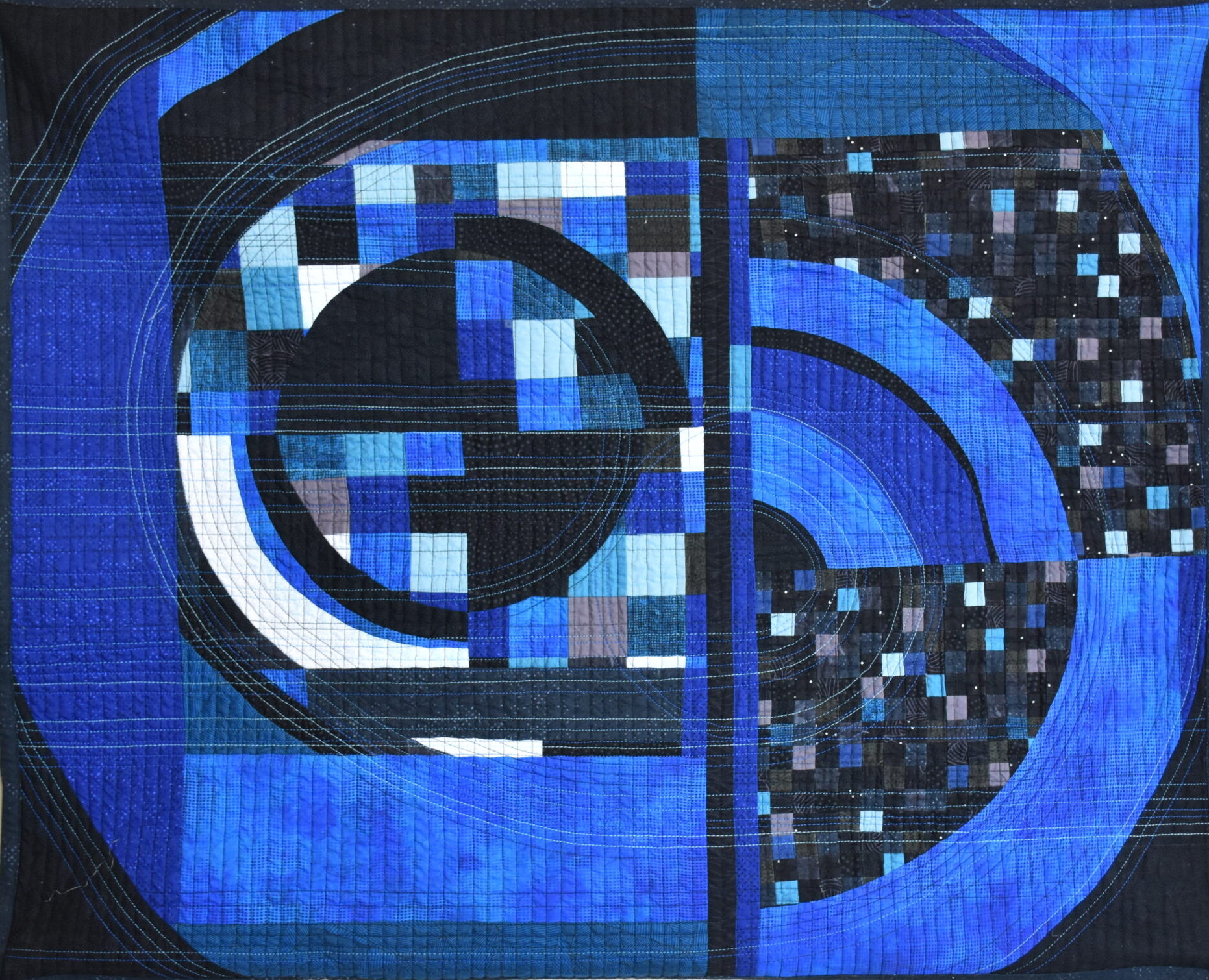Student, Faculty, Staff Creativity on Display at 34th Annual Art Days

Jie Yin, a fourth-year med student was taking a walk along the Charles River last spring and the drifting clouds reminded her of the swimming motion of koi fish mingling in a fishpond.
“Later that week I had a paint night with a friend, and I thought, ‘Why not just paint koi?’” said Yin. Her medium of choice is always watercolors.
“I feel like the watercolors imitate the movements of the fish and also gives…you a sense of where the color lies in the body of the fish,” said Yin, standing next to her small gold-framed painting on display in Hiebert Lounge. It was one of nearly 100 works of art presented at the 34th annual Art Days, a two-day celebration held Feb. 20-21 showcasing the creative talents of students, faculty and staff across the Medical Campus. From crocheted human organs to a multiplex fluorescent image of tuberculosis in a mouse lung and all types of painting, photography, textile arts and poetry, these works impressed with their variety, ingenuity and artistic skill.

“Once again, this is an amazing outpouring of creativity from across the campus, all three schools and the hospital. It’s just wonderful,” said Keith Tornheim, PhD, an associate professor of biochemistry who has served as Art Days faculty advisor for 21 years. Sponsored by the Provost’s Office and mounted by the student Creative Arts Society, Art Days was started by the late Dean Emeritus Aram Chobanian to foster the support and growth of the creative arts at BUMC.
“I am amazed at all the talent,” said Susan Feldman, a medical education coordinator in pediatrics. Feldman admits to having art-envy for those who create with their hands and imagination.
“It doesn’t surprise me at all that they would devote themselves to their interests in the creative arts in the same way they do their academic endeavors,” she said.
“I feel like every piece is unique and everyone has their own touch. That’s the beauty of art,” said Aryan Pradhan, a second-year master’s student in pathology & laboratory medicine. His computerized rendering of a human hand amidst strands of genetic material revealed, to his mind, how closely researchers are now working with genetic technologies.
Pradhan admired NEIDL histotechnologist Aoife O’Connell’s mouse lung image that could have been mistaken for a photograph of distant galaxies. Displayed nearby was neuroscience graduate student Sarah Zylka’s embroidered drosophila, a small fruit fly critical to genetic research. The texture of the fine pastel threads suggested the insect hairs that can only be seen close-up.
As a student who majored in fine arts as an undergraduate, Jennifer Mendez Alba came to the exhibit to feed her longing for the artistic expression crowded out by the busy schedule of a first-year dental student. She admired those who found the time to create.

“More than anything I’m thinking about that (time expenditure) with the textiles,” she said while appreciating the skill of a crocheted rendering by MS Genetic Counseling/MPH graduate student Gwendolyn Strickland, of Vincent van Gogh’s “The Starry Night,” a fictionalized view from his asylum window in Saint Remy, France.
“It’s really impressive, the detail, the precision,” said Alba. “I majored in art because it was what I was passionate about, but to make a living as an artist is really difficult.”
But Alba could also appreciate the need for fine motor skills and creativity in dentistry. Like Alba, third-year medical student Noah Siegel majored in fine arts as an undergraduate and saw creative thinking and artistic skills as an asset to his medical studies and career.
“I think a lot of art is problem solving, so there’s a lot of those same skills when you’re synthesizing patient information into a diagnosis or treatment,” said Siegel.

His own artwork on display embodied this thought: a mobile with glass panels dangling from wires and inscribed with words drawn from a possible patient diagnosis and treatment plan.
“I was inspired by the process of putting together a medical note, kind of synthesizing a patient’s history as a written document with all the different words that can come together,” he said.
Art, said Siegel, is not just a hobby but can be therapeutic.

That was the case for Zahra Sheikh, an anthropology research fellow who came to BU from Iran 18 months ago and started writing poems when she felt she couldn’t tell people about her feelings. Two of her poems were on display in Hiebert.
“This one poem has an imaginative story behind it, but this one was about my deep emotional feelings that I had one day when I was sad,” said Sheikh.
Her poems are heartfelt and personal. “I talk to you like I used to/You look at my soul, winter in your eyes…”
For that reason, Sheikh wasn’t certain she wanted to share them.
“I wasn’t sure enough to let people read them and to know that I wrote them, but I talked to Keith (Tornheim) and he said ‘It’s okay…nobody will judge you…So I decided to display them. I gathered my courage and decided to be brave.”